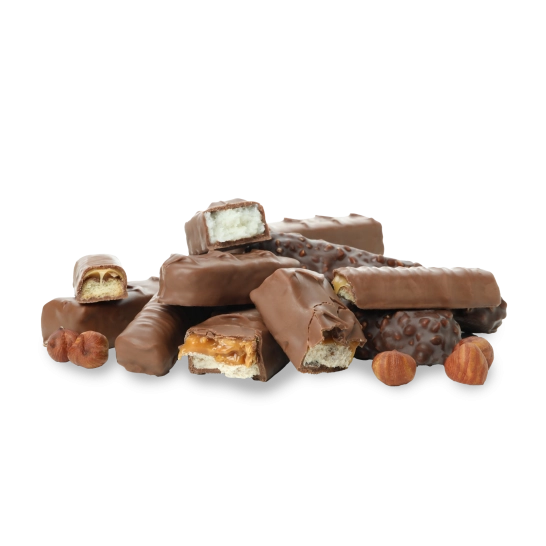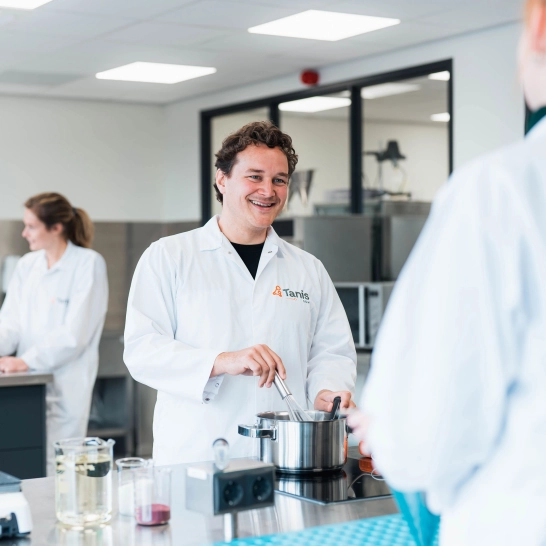
Ingredients
The Foundation of a Candy Bar
The starting point for any candy bar is its ingredients. Depending on the recipe, candy bars can include a wide range of elements, such as nougat, caramel, chocolate, nuts, and more. Each of these components adds to the overall texture, flavour, and enjoyment of the bar.
Key Ingredients:
- Nougat: A sweet, fluffy mixture made from sugar, syrup and whipping agent and optionally mixed with a fat phase to create creaminess.
- Caramel: A smooth, flavourful filling made from milk, sugar, syrup and butter.
- Chocolate: A blend of cocoa, sugar, and fat, often used to coat the candy bar.
- Add-ins: Ingredients such as nuts, fruits, rice crisps and other toppings that provide additional flavour and texture.
The quality of these ingredients significantly affects the final product. Thus, choosing high-quality raw materials is a crucial first step in candy bar manufacturing.










